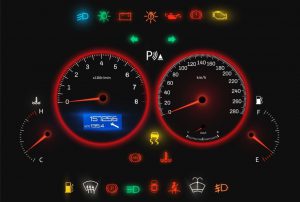Workshop | 2022-2023 State of the Union for Real Estate Investors & Entrepreneurs | September 21st @ 1:00 p.m. EDT
X

Choose an account type
What’s On Your Financial Dashboard?
December 29, 2020

What does success mean to you in your investments, and how often do you track it? Well, that might be much easier to answer if you simply stuck to traditional markets and read the value of your stock portfolio from a prepared report created by your broker.
But what about the self-directed investor, like you and me? Here is the problem – your measurements may not be the same as mine, and that is not a bad thing. I’m 64 years old, and perhaps soon I may desire to dial back my time at work and redirect my efforts elsewhere. For me, perhaps the ability to generate cash from my investments is far more important than missing out on the next big thing.
Others may simply want to outperform the stock market or want to have growth with very little downside risk. Regardless of our age or even the type of investments we prefer, I would encourage you to do what my friend, Craig, does on an annual basis. He focuses on his balance sheet, instead of his Profit and Loss. In other words, the balance sheet provides his true wealth, rather than simply how much profit he made after expenses and taxes. Balance sheets list the value of the assets (the more recent valuation, the better), and then subtract any debt or obligation that the owner has to carry that asset. The sum is the equity, ownership, or true wealth that you control. Any net profit from your investments, or any contributions made during the year all adds to that asset value.
To many of you, that is obvious, yet how many of us track the growth (or shrinkage) of our balance sheet each year?
The balance sheet, however, is a historical device that can tell us how far we have come on our quest to build wealth. What is far more critical is our financial dashboard – the critical measurements that we should be tracking to avoid the bad performance of our economic engine.
Engine Light – This is the critical performance indicator that says you need to drop everything to focus on mitigating the danger.
Tachometer – This is the measure of how fast the engine is revving. Is it just making noise and burning energy, or creating value, or perhaps just idling?
Speedometer – This is the amount of ground you are currently traveling. Keep in mind, this measurement is only at the current moment, and the odometer is the true test of how far you have traveled.
Cruise Control – This gives you the ability to take your foot off the pedal and not worry about the day-to-day nuances of your investment. The risks are relatively low if you miss monitoring this on a routine basis.
Oil Pressure – Like the temperature gauge, this keeps the engine running cool on the inside. Look for changes in early warning indicators to see if an investment is heading into difficulty.
Fuel Gauge – Do you have sufficient liquid capital in your account to take advantage of new investment opportunities or are you content to watch the burn rate of your current assets?
Lights – Are you fully illuminated about the facts around your investment decisions and monitoring? Are you thinking “down-the-road”, or just as far as you are able to see with your unaided eye?
Turn Signal Indicator – Understand when you are changing direction, and make sure it gets you to your financial goals sooner before you shift course.
Gear indicator – How fast do you want to go, and how tolerant are you of the risks of moving fast?
Temperature Gauge – Is a sector overheated, or is it within tolerance?
Interior Climate – How are you feeling about your investments? Are you stressed, or optimistic? Is it too much work, or does it give you satisfaction?
Compass – What direction are you going? Are you on track, or influenced by the latest trend or friendly advice?
Windshield Washer Fluid – How clear is your vision, and are you keeping up on the education you need to fully understand your choices?
Door Open? Seatbelt On? Reverse warning? (Yes, this is on my Prius!) – don’t ignore the warning signs that your investments are moving into unhealthy territory.
Indeed, it might seem a bit more work to keep track of your investments in the self-directed world, but wouldn’t you rather drive a Ferrari?
We can’t wait to see what is in store for us in 2021 – and despite an incredible headwind, we continue to grow along with you. We have added staff to make us more available to you than ever, and we investing in technology to improve our processes and communications with you to boost your experiences with NuView Trust.
May you have the best New Year ever, and as always, all the best in your investments,
Glen Mather

